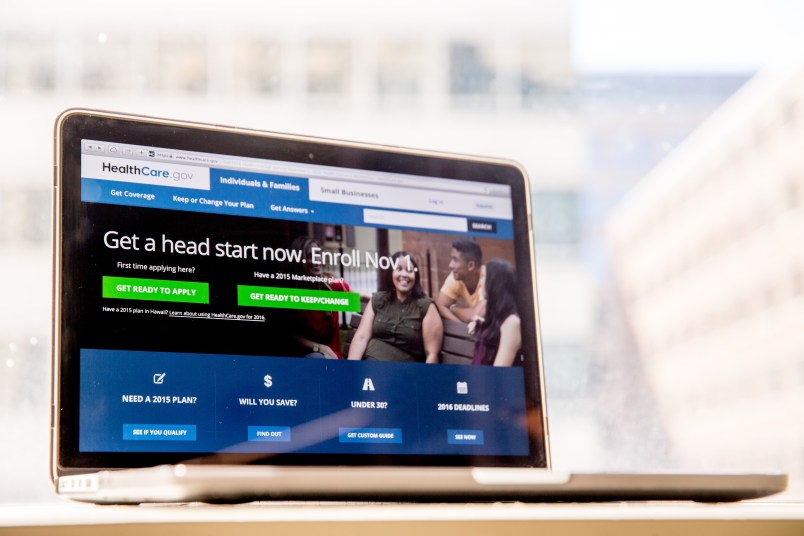The bulk of the premium increases in the Affordable Care Act exchanges expected next year can be blamed on the political uncertainty driven by the Trump administration, a report by an actuarial firm found this week.
Experts at Oliver Wyman estimated that two-thirds of the rate increases in the 2018 plan year will be due to the White House’s refusal to say whether it will continue paying out key Obamacare subsidies to insurers, as well as the ambiguity as to whether the law’s individual mandate will be enforced next year.
“Uncertainty is nothing new for actuaries, who routinely plan for and calculate the risk of things like an unexpected number of large claims or a severe flu season,” the report said. “Today, however, actuaries are having to adjust for uncertainty related to potential political decisions and actions.”
By Oliver Wyman’s breakdown, of the 28-40 percent premium increases expected next year, 5-8 percent will be the result of rises in costs of care, 3 percent because of the implementation of the federal health insurance tax, 11-20 percent will be due to the subsidy confusion and not knowing the fate of the individual mandate will drive around 9 percent of the hikes.
On the last point, Oliver Wyman added, that impact for the potential non-enforcement of the mandate will “vary widely, from no impact at all to 20 percent or more,” depending on the plan.
The report is based on publicly available data posted by the Centers for Medicare and and Medicaid, an agency under the Health and Human Services Department.
As the the deadline for 2018 plan year filings approaches, GOP lawmakers are still hashing out the details of their Obamacare repeal legislation in the Senate. Republicans have insisted however that the individual mandate should be eliminated immediately as part of their effort.
The fate of the Obamacare subsidies, known as cost-sharing reduction payments, is still unclear, despite the calls from the insurance industry and the business community to guarantee their payment. They are the subject of a 2014 House GOP lawsuit that has been put on hold, and President Trump has explicitly floated ending them as a way of sabotaging the Obamacare marketplaces.







This will be the subject of all the Sunday political talk shows.
Believe me.
It’s what’s known as a self-fulfilling prophesy. Republican’ts run on a platform of “Government is broken!” Then they get elected and break it…
Just remember this, Republicans, the next time you hear a conservative defending the “free market.”
Conservatives don’t believe in a free market.
Their government is going to drive the insurance industry. They’ve already tried to drive doctors out of business – when they weren’t busy shooting them.
Do you want to explore innovative solutions to climate issues? Sorry, Republicans want you to believe there’s no market. They want to tell you what to manufacture and where you can do it.
Free market. It’s a fake Republican concept.
Funny how the fact that Health Insurance Company profits rose by 40% this year and executive bonuses increased by over 100% and are now more generous than Wall Street banks Goldman Sachs and Morgan Stanley.
The Health Insurance Companies are having a gold rush and the Republicans are about to make them richer than the giant oil companies.
I wonder why people are hitting the tipping point and violence is increasing across the country. The bottom 90% of the population is so screwed in the US!